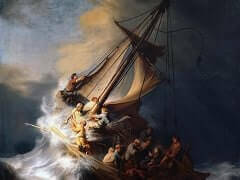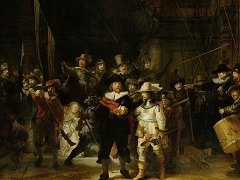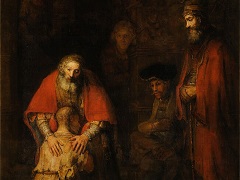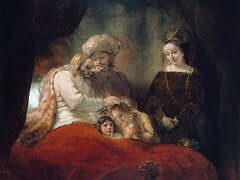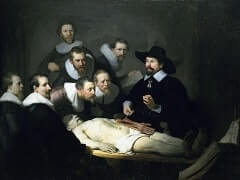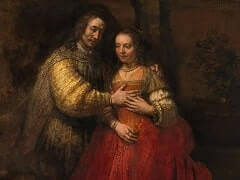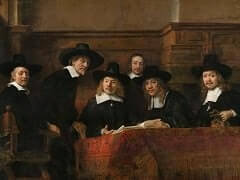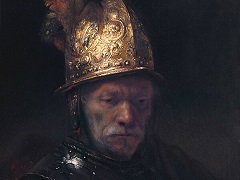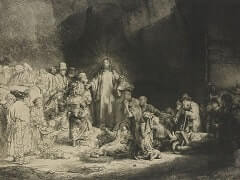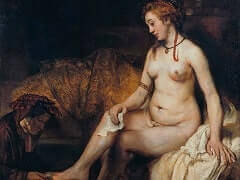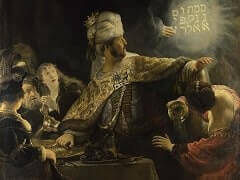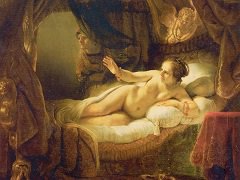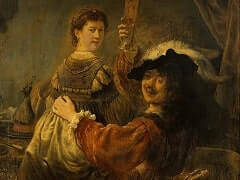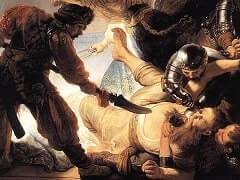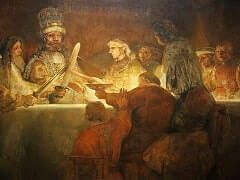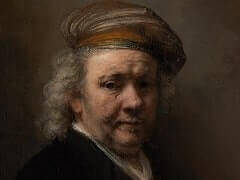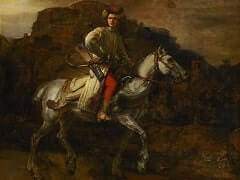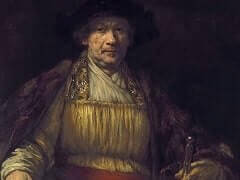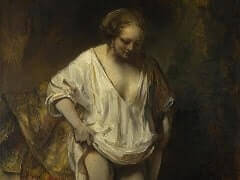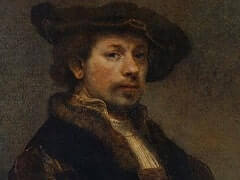Christ Disputing with the Doctors, 1652 by Rembrandt

Christ Disputing with the Doctors remains firmly rooted in reality. In the painting Christ is reduced to his most diminutive stature, shown seated and in profile to one side of the composition as he addresses his elders animatedly. Gathered before him or peering from a balcony above, they centre around a seated doctor, heavily delineated in pen, who listens attentively. He recalls the aged Jacob hearing of Joseph's dreams while also enthroned like an Oriental potentate. The contrast between his absorption and the animation of the twelve-year-old Christ forms the focus of the drawing and cannot help but remind one that the aging and ruminative Rembrandt had his own twelveyear-old to listen to and contend with at the time he made this drawing. Above all, however, the drawing attests to the extent to which Rembrandt was fascinated with the power of the spoken word to move men's minds.

